
Northern Mindanao is an administrative region in the Philippines, designated as Region X. It comprises five provinces: Bukidnon, Camiguin, Misamis Occidental, Misamis Oriental, and Lanao del Norte, and two cities classified as highly urbanized, all occupying the north-central part of Mindanao island, and the island-province of Camiguin. The regional center and largest city is Cagayan de Oro. Lanao del Norte was transferred to Northern Mindanao from Region XII by virtue of Executive Order No. 36 in September 2001.

Misamis Occidental, officially the Province of Misamis Occidental, is a province located in the region of Northern Mindanao in the Philippines. Its capital is the city of Oroquieta while Ozamiz is the most-populous city. The province borders Zamboanga del Norte and Zamboanga del Sur to the west and is separated from Lanao del Norte by Panguil Bay to the south and Iligan Bay to the east. The province of Misamis was originally inhabited by Subanens who were an easy target by the sea pirates from Lanao.
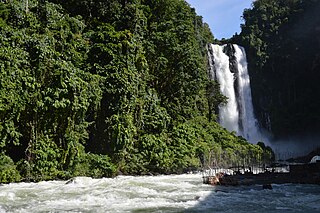
Lanao del Norte, officially the Province of Lanao del Norte, is a province in the Philippines located in the Northern Mindanao region. Its capital is Tubod.

Misamis Oriental, officially the Province of Misamis Oriental, is a province located in the region of Northern Mindanao in the Philippines. Its capital, largest city and provincial center is the city of Cagayan de Oro, which is governed independently from the province and also the regional center of Northern Mindanao.
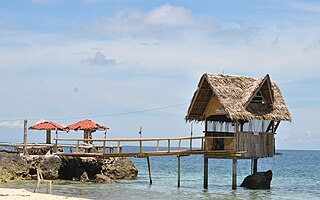
Iligan Bay is a bay in Mindanao Island in the Philippines. The bay is part of the Bohol Sea, and curves into the northern coast of Mindanao Island.

Iligan, officially the City of Iligan, is a highly urbanized city in the region of Northern Mindanao, Philippines. According to the 2020 census, it has a population of 363,115 people making it the second most populous city in Northern Mindanao after Cagayan de Oro.

Ozamiz, officially the City of Ozamiz, is a component city in the province of Misamis Occidental, Philippines. According to the 2020 census, it has a population of 140,334 people making it the most populous city in Misamis Occidental.

Tangub, officially the City of Tangub, is a component city in the province of Misamis Occidental, Philippines. According to the 2020 census, it has a population of 68,389 people.

Baroy, officially the Municipality of Baroy, is a municipality in the province of Lanao del Norte, Philippines. According to the 2020 census, it has a population of 24,683 people.

Kolambugan, officially the Municipality of Kolambugan, is a municipality in the province of Lanao del Norte, Philippines. According to the 2020 census, it has a population of 28,265 people.
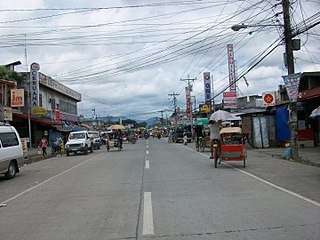
Lala, officially the Municipality of Lala, is a municipality in the province of Lanao del Norte, Philippines. According to the 2020 census, it has a population of 73,425 people.
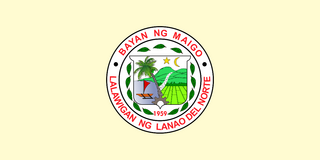
Maigo, officially the Municipality of Maigo, is a municipality in the province of Lanao del Norte, Philippines. According to the 2020 census, it has a population of 23,337 people.

Tubod, officially the Municipality of Tubod, is a municipality and capital of the province of Lanao del Norte, Philippines. According to the 2020 census, it has a population of 60,182 people.

Labo Airport, also known as Ozamiz Airport, is an airport serving the general area of the city of Ozamiz in the Philippines. It is the only airport in the province of Misamis Occidental. The airport is classified as a community airport by the Civil Aviation Authority of the Philippines, a body of the Department of Transportation that is responsible for the operations of not only this airport but also of all other airports in the Philippines except the major international airports. It is one of only two community airports in the Philippines with commercial operations, but one of the busiest in Mindanao in terms of aircraft movement and passenger traffic.

The Roman Catholic Archdiocese of Ozamis is a metropolitan archdiocese of the Roman Catholic Church in the province of Misamis Occidental, southern Philippines. The archdiocese cathedral is the Metropolitan Cathedral of the Immaculate Conception in Ozamiz City, and its present archbishop is Martin Jumoad. The official spelling of the church is Ozamis, while the city it is located is Ozamiz.
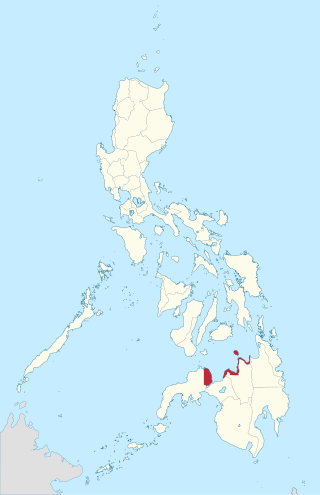
Misamis was a province of the Philippines located in Mindanao. Originally a Spanish-era district, it became a chartered province on May 15, 1901. The province was dissolved in 1929.

The Butuan–Cagayan de Oro–Iligan Road, or Butuan–Cagayan de Oro–Iligan–Tukuran Road, is a 416-kilometer (258 mi), two-to-six lane major thoroughfare, connecting the provinces of Agusan del Norte, Misamis Oriental, Lanao del Norte, and Zamboanga del Sur.
Port Management Office Misamis Occidental/Ozamiz is one of the port management offices of the Philippine Ports Authority which oversees all government and private ports in the Province of Misamis Occidental, with the code MOZ.

The Panguil Bay Bridge is a 3.77 km (2.34 mi) extradosed bridge that crosses Panguil Bay. It connects Tangub in Misamis Occidental and Tubod in Lanao del Norte. It is currently the longest water-spanning bridge in Mindanao. It also reduces the travel time between Tangub and Tubod from 2.5 hours to just a few minutes.

National Route 9 (N9) is a 416-kilometer (258 mi), two to six major primary route network connecting the provinces of connecting the provinces of Agusan del Norte, Misamis Oriental, Lanao del Norte, and Zamboanga del Sur.





















